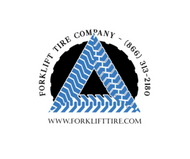23rd Mar 2025
Forklifts are essential in warehouses, construction sites, and industrial settings. However, forklift accidents can lead to serious injuries and costly damages. Many of these accidents are preventable when forklift operators follow proper safety protocols.
One of the best ways to enhance forklift safety is through regular refresher training for operators. Proper training helps prevent common forklift malpractices that contribute to accidents. Below are some of the most frequent mistakes operators make and how to avoid them.
The Importance of Forklift Safety Training
Forklift operators must undergo regular training to stay up to date with the latest safety guidelines. Proper forklift training includes:
- Understanding forklift mechanics and load limits.
- Learning how to navigate tight spaces safely.
- Recognizing workplace hazards, such as slippery floors or uneven terrain.
- Knowing the correct way to load, transport, and unload goods.
- Practicing emergency response protocols in case of an accident.
Employers should ensure that their forklift operators attend refresher courses at least once a year to reinforce safe practices and prevent accidents.
Improper Stacking of Load
Incorrectly stacked loads pose a major safety risk. If loads are not stable, they can fall, causing injuries to pedestrians and forklift operators. To ensure proper stacking:
- Always position the load evenly and securely on the forklift.
- Avoid using damaged pallets, as they can collapse under weight.
- Follow height regulations to prevent tipping hazards.
- Undergo forklift training to identify stacking risks and best practices.
- Stack loads in a pyramid shape whenever possible for better stability.
Manipulating the Forklift Counterweight
Forklifts have specific weight limits, and exceeding these limits can lead to dangerous tip-over accidents. Some operators attempt to manipulate the counterweight by adding extra weight to the rear of the forklift to lift heavier loads than allowed.
This practice is highly dangerous and can:
- Damage the forklift’s structural integrity.
- Reduce maneuverability, increasing the risk of overturning.
- Cause severe accidents and workplace injuries.
To ensure safety, always adhere to the manufacturer’s specified Safe Working Load (SWL) and never alter the forklift’s counterweight.
Adjusting Load Height While Moving
A forklift's stability is dependent on the load’s position. Adjusting the load height while the forklift is in motion compromises stability, especially when making turns, which can result in tip-over accidents.
Best practices to prevent accidents include:
- Always stop the forklift before raising or lowering a load.
- Maintain a low load height when traveling.
- Follow operational guidelines to ensure proper load handling.
- Keep loads slightly tilted backward to enhance stability.
Unbalanced Loading
An improperly balanced load makes a forklift unstable. Forklift operators must ensure that loads are evenly distributed across both tynes (forks). A common mistake is using only one tyne to lift a load, which can:
- Weaken and damage the forks over time.
- Cause tipping and loss of control.
- Increase the risk of load drops and injuries.
To prevent this, forklift operators should:
- Always use both forks for lifting and transporting loads.
- Ensure the center of gravity is balanced before moving.
- Avoid carrying loads that exceed the forklift’s rated capacity.
- Use load stabilizers or attachments when necessary for added safety.
Additional Forklift Safety Measures
In addition to avoiding the above mistakes, forklift operators should also adhere to these safety measures:
Conduct Pre-Operation Inspections
Before starting a shift, forklift operators should inspect their forklifts to ensure they are in proper working condition. This includes:
- Checking tire pressure and condition.
- Inspecting brakes, steering, and hydraulic controls.
- Ensuring seat belts and safety features are functional.
- Looking for fluid leaks or mechanical issues.
- Confirming that warning lights and alarms are working properly.
Maintain a Clear Operating Area
A cluttered workspace increases the risk of forklift accidents. Operators should:
- Keep aisles clear of obstacles and debris.
- Ensure proper lighting in warehouse and work areas.
- Use floor markings to indicate forklift travel paths.
- Warn pedestrians and other workers before moving loads.
Drive at a Safe Speed
Speeding is a major cause of forklift accidents. To maintain safety:
- Always follow the designated speed limits in the workplace.
- Reduce speed when turning corners or operating on inclines.
- Avoid sudden stops or quick turns that may cause instability.
- Stay alert to nearby workers and moving equipment.
The Importance of Proper Forklift Tires
One often-overlooked factor in forklift safety is tire quality. Worn-out or damaged forklift tires reduce traction and stability, increasing accident risks. Investing in high-quality forklift tires improves load handling and overall performance. Forklift tires should be regularly inspected for wear and replaced when necessary.
Final Thoughts
Forklift safety should be a top priority in any workplace. By avoiding improper load stacking, counterweight manipulation, adjusting loads while moving, and unbalanced loading, forklift operators can significantly reduce the likelihood of accidents. Additionally, regular maintenance, pre-operation inspections, and adherence to speed limits can further enhance workplace safety.
At Forklift Tire Company, we supply top-quality forklift tires designed to enhance safety and performance. Visit our online store for exclusive deals or contact our customer service team at sales@forklifttire.com for expert assistance. Investing in reliable forklift tires can improve safety and extend the lifespan of your forklift, ensuring smooth and accident-free operations.






